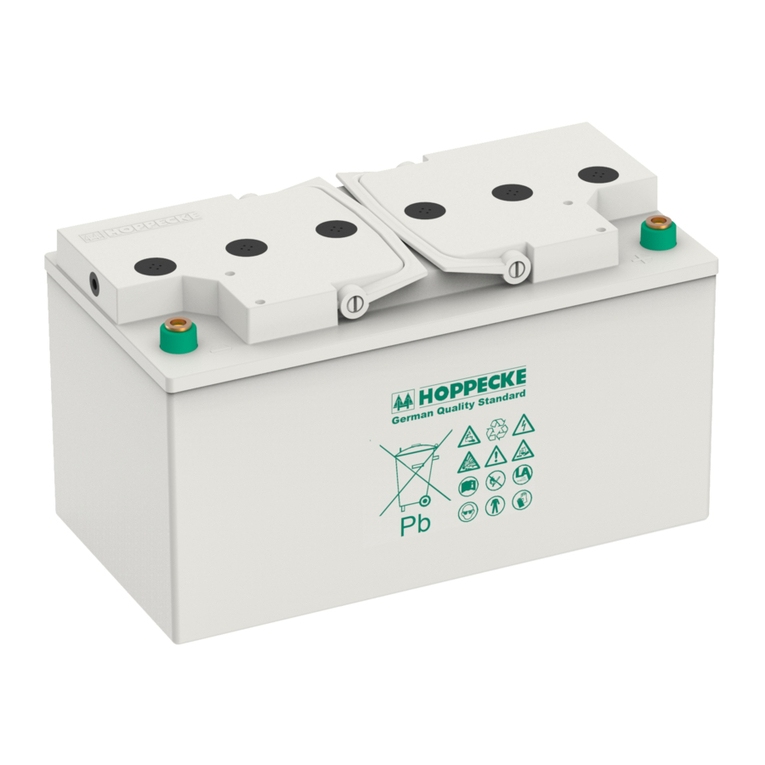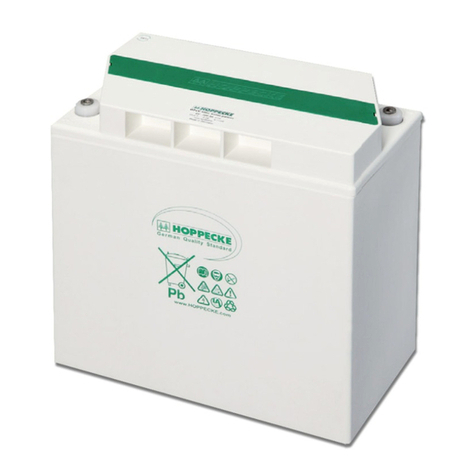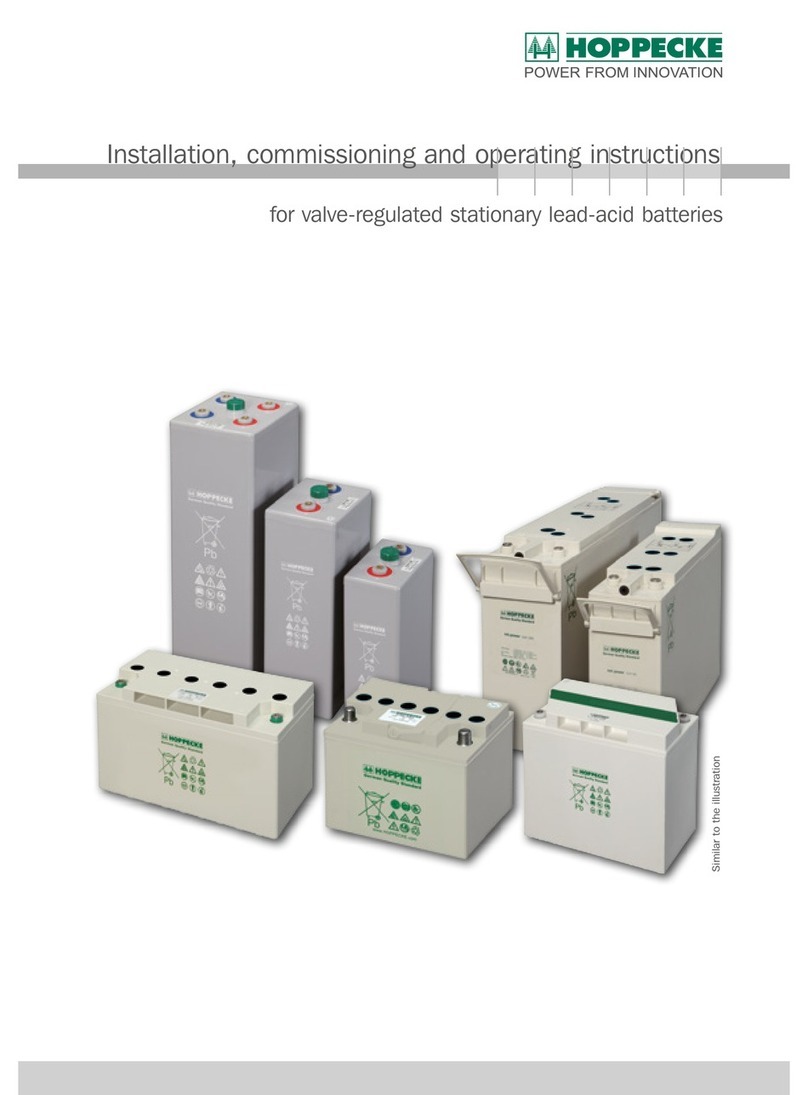Using this manual
Manual_Grid_Power_FNC_en_V3_0 4
7.1. Storage of Filled and Charged (FC) Cells 25
7.2. Storage of Unfilled and Uncharged (UU) and Filled and Uncharged (FU) grid|power
FNC®Cells 26
8. INSTALLATION 27
8.1. Mounting a Rack or Cabinet 27
8.1.1. Before Mounting a Rack or Cabinet 27
8.1.2. Checking the Scope of Delivery 27
8.1.3. Mounting a Rack 28
8.1.4. Mounting a Cabinet 28
8.1.5. Ventilation Requirements 28
8.2. Installing the Battery System 29
8.2.1. Preliminary Work on Unfilled and Uncharged grid|power FNC®Cells 30
8.2.2. Equipping the Rack or Cabinet 30
8.2.3. Connecting the Battery System 31
8.2.4. Labelling the Battery System 33
9. COMMISSIONING 33
9.1. Charging Procedures for the Initial Commissioning 34
9.1.1. Charging with Constant Current 34
9.1.2. Charging with Constant Current and Constant Voltage (CCCV) 35
9.2. Commissioning of Unfilled and Uncharged (UU) and Filled and uncharged (FU)
grid|power FNC®Cells 36
9.3. Commissioning Filled and Charged (FC) FNC®Cells 37
9.4. Capacity Testing of Batteries According to DIN IEC 60623 39
10. MAINTENANCE 39
10.1. Checking for Cleanliness and Condition of the Battery System 40
10.2. Checking the Electrolyte Levels 41
10.3. Measuring the Charging Voltage 43
10.4. Testing the Insulation Resistance 44
10.5. Cleaning 45
10.6. Fill up the Electrolyte Level with Distilled Water 46
10.7. Reconditioning 48
11. TROUBLESHOOTING 52
11.1. Over Consumption of Distilled Water 52
11.2. Dispersion of the Individual Cell Voltages 52
11.3. Available Battery Capacity is Low 52
11.4. Insulation Resistance is Low 52
11.5. Battery Voltage not Measureable 53

































